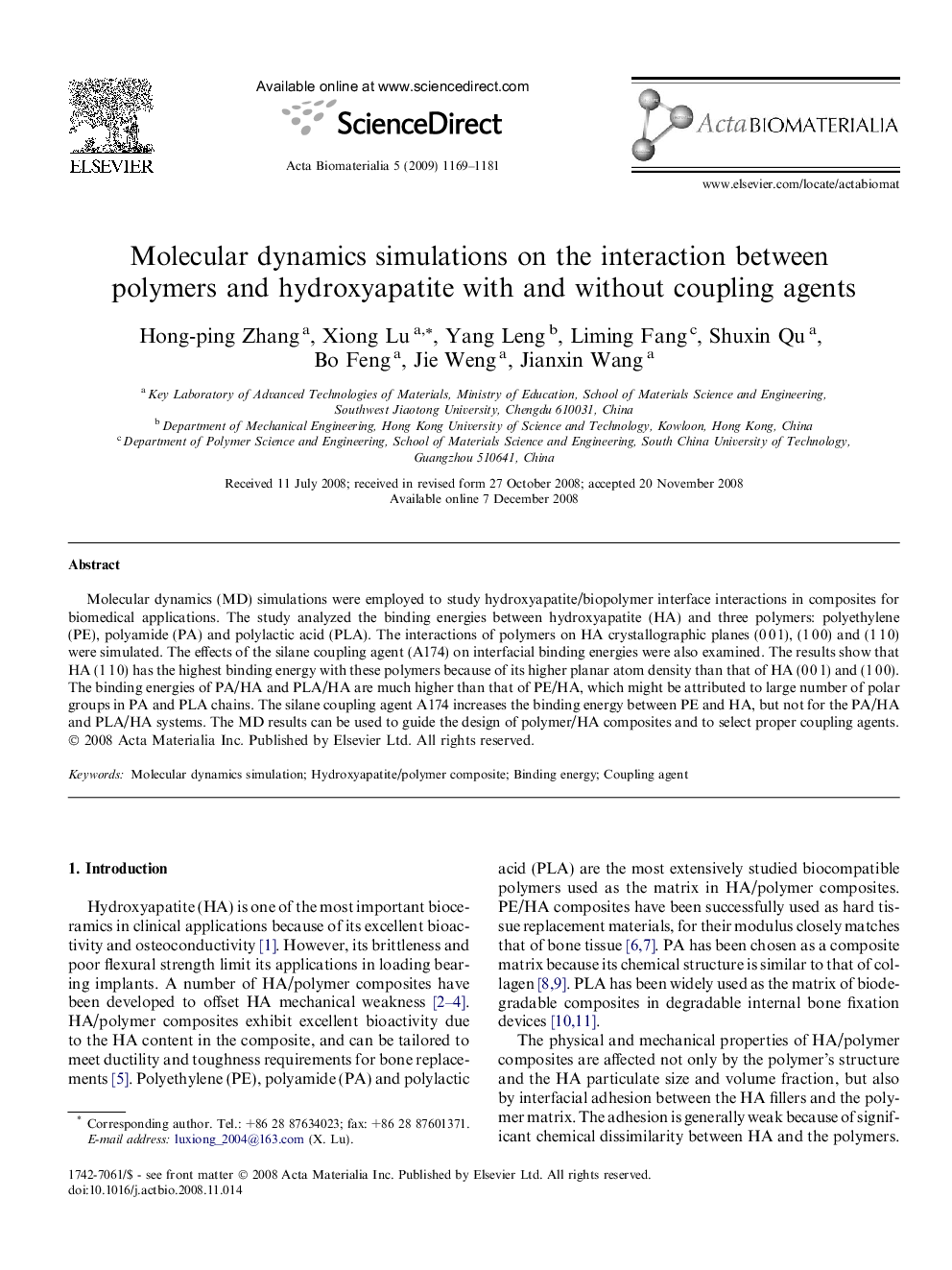| Article ID | Journal | Published Year | Pages | File Type |
|---|---|---|---|---|
| 1520 | Acta Biomaterialia | 2009 | 13 Pages |
Molecular dynamics (MD) simulations were employed to study hydroxyapatite/biopolymer interface interactions in composites for biomedical applications. The study analyzed the binding energies between hydroxyapatite (HA) and three polymers: polyethylene (PE), polyamide (PA) and polylactic acid (PLA). The interactions of polymers on HA crystallographic planes (0 0 1), (1 0 0) and (1 1 0) were simulated. The effects of the silane coupling agent (A174) on interfacial binding energies were also examined. The results show that HA (1 1 0) has the highest binding energy with these polymers because of its higher planar atom density than that of HA (0 0 1) and (1 0 0). The binding energies of PA/HA and PLA/HA are much higher than that of PE/HA, which might be attributed to large number of polar groups in PA and PLA chains. The silane coupling agent A174 increases the binding energy between PE and HA, but not for the PA/HA and PLA/HA systems. The MD results can be used to guide the design of polymer/HA composites and to select proper coupling agents.
